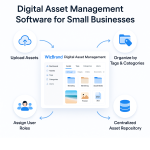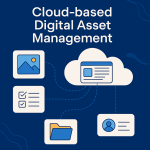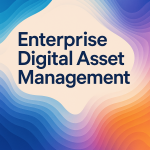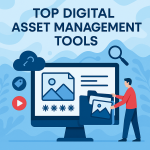Limited Time Offer!
For Less Than the Cost of a Starbucks Coffee, Access All DevOpsSchool Videos on YouTube Unlimitedly.
Master DevOps, SRE, DevSecOps Skills!
Introduction
DataOps, or data operations, is a set of practices, processes, and technologies that combines an integrated and process-oriented perspective on data with automation and methods from agile software engineering to improve quality, speed, and collaboration and promote a culture of continuous improvement in the area of data analytics.
DataOps is inspired by DevOps, a set of practices that combines software development (Dev) and IT operations (Ops) to shorten the systems development life cycle and provide continuous delivery with high software quality. DataOps applies DevOps principles to the entire data lifecycle, from data ingestion and preparation to data modeling, analytics, and visualization.
What is dataops?

DataOps is a collaborative data management practice focused on improving communication, integration, and automation of data flows across an organization. It emphasizes the importance of teamwork, collaboration, and processes to streamline data operations and provide valuable, actionable insights.
The DataOps Workflow:

- Planning and Design:
- Define objectives and requirements.
- Design data pipelines and workflows.
- Data Ingestion:
- Collect and aggregate data from various sources.
- Ensure data quality and integrity.
- Data Processing:
- Clean, transform, and enrich the data.
- Apply necessary operations for analysis.
- Data Storage:
- Store structured and unstructured data efficiently.
- Ensure accessibility and security.
- Data Analysis and Reporting:
- Perform analytics to extract meaningful insights.
- Create reports and visualizations for stakeholders.
- Model Deployment (if applicable):
- Deploy machine learning models for predictive analysis.
- Monitoring and Optimization:
- Continuously monitor data pipelines for issues.
- Optimize for performance and cost-effectiveness.
Why We need dataops?

Embracing DataOps offers organizations a multitude of benefits. Firstly, it significantly boosts efficiency by automating repetitive tasks, freeing up valuable time and resources for more strategic endeavors. Moreover, the collaborative nature of DataOps enhances teamwork and communication among data professionals, ensuring that everyone is aligned towards achieving common objectives. This leads to faster time-to-insight, a critical advantage in today’s fast-paced business environment. DataOps also places a strong emphasis on data quality, reducing the likelihood of errors and providing reliable insights for informed decision-making. Additionally, its scalability and adaptability allow organizations to seamlessly handle increasing data volumes and adapt to evolving business needs. By promoting cost efficiency, risk mitigation, and a customer-centric approach, DataOps is not only a technological shift but a transformative force that drives innovation and competitiveness in the data-driven landscape.
Using DataOps offers several significant advantages for organizations. Here are some compelling reasons to embrace DataOps:
- Improved Efficiency: DataOps promotes automation, reducing manual intervention in data workflows. This leads to faster data processing and analysis, enabling teams to focus on higher-value tasks.
- Enhanced Collaboration: By bringing together cross-functional teams, DataOps fosters collaboration between data engineers, data scientists, analysts, and other stakeholders. This ensures that everyone is aligned towards a common goal, leading to better outcomes.
- Faster Time-to-Insight: DataOps accelerates the process of converting raw data into actionable insights. By streamlining data pipelines and workflows, organizations can make informed decisions more quickly, gaining a competitive edge in the market.
- Higher Data Quality: Data quality is crucial for accurate analysis and decision-making. DataOps emphasizes data quality checks and validation, reducing the likelihood of errors and ensuring that the insights derived from data are reliable and trustworthy.
- Scalability: As organizations deal with growing volumes of data, scalability becomes a critical factor. DataOps provides a framework for scaling data operations, ensuring that they can handle increasing complexity and volume.
- Cost Efficiency: By automating routine tasks and optimizing processes, DataOps can lead to cost savings. It helps organizations allocate resources more efficiently and avoid unnecessary expenses associated with manual data operations.
- Risk Mitigation: DataOps incorporates robust monitoring and validation processes, reducing the risk of errors, data breaches, and compliance violations. This is particularly important in industries where data security and regulatory compliance are paramount.
- Adaptability to Changing Environments: In today’s dynamic business landscape, organizations need to be agile. DataOps allows for rapid adaptation to changes in data sources, technology, and business requirements, ensuring that data operations remain effective and relevant.
- Customer-Centric Approach: DataOps enables organizations to better understand their customers by providing timely and accurate insights. This, in turn, allows for the customization of products, services, and experiences to meet customer needs and preferences.
- Innovation and Experimentation: With streamlined data operations, teams have more time and resources to focus on innovation and experimentation. This can lead to the development of new products, services, and strategies based on data-driven insights.
What is the Advantage of dataops?

Embracing DataOps is a strategic imperative for any organization aiming to thrive in today’s data-driven landscape. Its advantages are manifold, touching every aspect of data management and utilization. By automating processes and reducing manual intervention, DataOps significantly boosts operational efficiency. Moreover, it fosters a culture of collaboration and cross-functional teamwork, ensuring that data professionals work seamlessly towards common objectives. This leads to faster insights, a critical advantage in a rapidly changing business environment. DataOps also places a premium on data quality, resulting in more reliable and accurate insights. Its scalability ensures that organizations can handle the increasing volumes and complexity of data. Furthermore, by mitigating risks associated with data management and ensuring compliance, DataOps provides a robust framework for secure and responsible data operations. In essence, DataOps empowers organizations to not only manage their data effectively but to leverage it as a strategic asset, driving innovation, efficiency, and competitive advantage.
The advantages of DataOps are substantial and transformative for organizations seeking to harness the full potential of their data resources. Here are some key benefits:
- Efficiency and Automation: DataOps streamlines data workflows, reducing manual intervention and automating routine tasks. This leads to faster data processing and analysis, enabling teams to focus on higher-value activities.
- Improved Collaboration: By breaking down silos and promoting cross-functional teamwork, DataOps enhances communication and collaboration among data engineers, scientists, analysts, and other stakeholders. This ensures everyone is aligned towards achieving common objectives.
- Faster Time-to-Insight: DataOps accelerates the process of converting raw data into actionable insights. This is crucial in today’s fast-paced business environment, allowing organizations to make informed decisions more quickly.
- Higher Data Quality: DataOps places a strong emphasis on data quality checks and validation. This reduces the likelihood of errors, providing reliable insights for informed decision-making.
- Scalability and Adaptability: As organizations deal with growing volumes of data, scalability becomes a critical factor. DataOps provides a framework for scaling data operations, ensuring they can handle increasing complexity and volume.
- Cost Efficiency: By automating routine tasks and optimizing processes, DataOps can lead to cost savings. It helps organizations allocate resources more efficiently and avoid unnecessary expenses associated with manual data operations.
- Risk Mitigation: DataOps incorporates robust monitoring and validation processes, reducing the risk of errors, data breaches, and compliance violations. This is particularly important in industries where data security and regulatory compliance are paramount.
- Customer-Centric Approach: DataOps enables organizations to better understand their customers by providing timely and accurate insights. This, in turn, allows for the customization of products, services, and experiences to meet customer needs and preferences.
- Innovation and Experimentation: With streamlined data operations, teams have more time and resources to focus on innovation and experimentation. This can lead to the development of new products, services, and strategies based on data-driven insights.
- Adaptation to Changing Environments: In today’s dynamic business landscape, organizations need to be agile. DataOps allows for rapid adaptation to changes in data sources, technology, and business requirements, ensuring that data operations remain effective and relevant.
What is the feature of dataops?
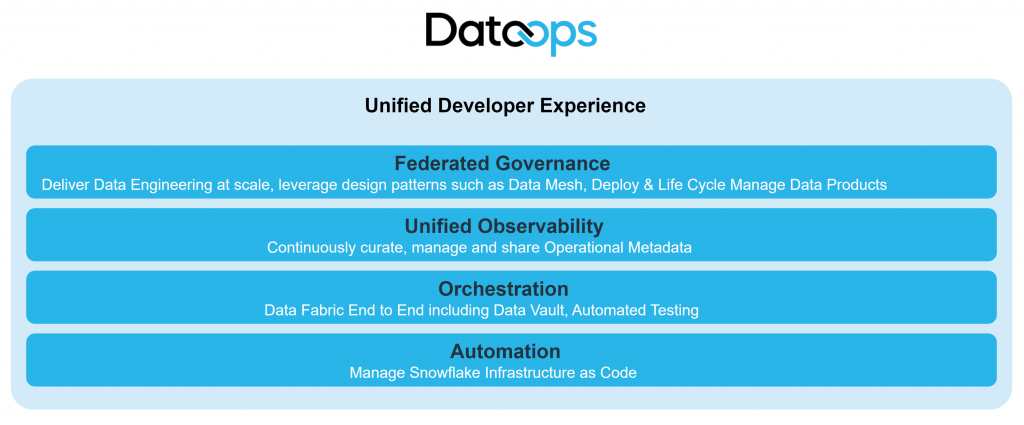
DataOps is characterized by a set of distinctive features that collectively revolutionize how organizations handle their data operations. Firstly, it emphasizes a collaborative approach, breaking down silos and fostering seamless communication between data engineering, data science, and business teams. This ensures that all stakeholders are aligned towards common objectives. Automation is another pivotal feature; DataOps leverages cutting-edge technology to streamline data workflows, reducing manual intervention and enabling faster processing. Continuous integration and continuous deployment (CI/CD) principles are applied, allowing for rapid, iterative development and deployment of data pipelines. DataOps also prioritizes data quality, incorporating robust validation and testing processes to ensure that insights derived from data are accurate and reliable. Scalability is a key feature, enabling organizations to handle growing volumes of data without compromising performance. Additionally, monitoring and alerting mechanisms provide real-time visibility into data pipeline performance, allowing for proactive issue resolution. In summary, DataOps is defined by its collaborative, automated, quality-centric, and scalable approach to data operations, driving efficiency and innovation in the data-driven landscape.
The features of DataOps encompass a range of practices and principles designed to enhance the efficiency, quality, and collaboration in data operations. Here are some key features of DataOps:
- Collaboration and Communication: DataOps encourages cross-functional collaboration among data engineers, data scientists, analysts, and other stakeholders. It emphasizes open communication channels to ensure alignment towards common objectives.
- Automation: Automation is a cornerstone of DataOps. It involves the use of tools and technologies to automate data workflows, reducing manual intervention and accelerating the processing of data.
- Continuous Integration and Continuous Deployment (CI/CD): DataOps applies CI/CD principles to data pipelines, enabling rapid and iterative development, testing, and deployment. This ensures that data processes are continuously refined and optimized.
- Data Quality Assurance: DataOps places a strong emphasis on data quality. It incorporates validation and testing processes to ensure that data is accurate, complete, and reliable for analysis.
- Scalability: DataOps frameworks are designed to handle growing volumes of data. They provide mechanisms for scaling data operations to meet the demands of increasing data size and complexity.
- Version Control: Like in software development, version control in DataOps allows for tracking changes to data pipelines. This ensures traceability and enables teams to revert to previous versions if needed.
- Monitoring and Alerting: DataOps incorporates monitoring and alerting mechanisms to provide real-time visibility into the performance of data pipelines. This allows for proactive issue detection and resolution.
- Security and Compliance: DataOps frameworks incorporate security measures to protect sensitive data. They also facilitate compliance with industry regulations and data privacy laws.
- Documentation and Knowledge Sharing: DataOps encourages thorough documentation of processes, workflows, and data pipelines. This promotes knowledge sharing and ensures that best practices are followed consistently.
- Adaptability to Change: DataOps embraces an agile approach, allowing for rapid adaptation to changes in data sources, business requirements, and technology stacks.
- Cost Efficiency: DataOps seeks to optimize resource allocation and usage, minimizing unnecessary costs associated with manual data operations.
- Feedback Loops and Continuous Improvement: DataOps encourages the establishment of feedback loops for ongoing evaluation and improvement of data processes and workflows.
What are the Top 10 Use cases of dataops?

DataOps finds application across various industries and use cases, revolutionizing how organizations manage and leverage their data resources. Here are the top 10 use cases of DataOps:
- E-commerce and Retail:
- Optimizing inventory management for efficient stock replenishment.
- Demand forecasting to meet customer needs and prevent overstocking.
- Healthcare:
- Efficient management of patient records for improved patient care.
- Clinical data analysis to identify trends and patterns for better diagnoses and treatments.
- Finance:
- Fraud detection to safeguard against financial losses.
- Risk assessment for informed investment decisions.
- Manufacturing:
- Process optimization to improve efficiency and reduce waste.
- Quality control for consistent, high-quality production.
- Marketing and Advertising:
- Customer segmentation for targeted marketing campaigns.
- Return on investment (ROI) analysis to measure the effectiveness of marketing efforts.
- Telecommunications:
- Network performance optimization for seamless connectivity.
- Customer churn prediction to enhance customer retention strategies.
- Energy and Utilities:
- Optimizing energy production and distribution for efficiency.
- Predictive maintenance to prevent costly equipment failures.
- Technology and Software Development:
- Deployment and management of software products and services.
- Customer feedback analysis for product improvement.
- Transportation and Logistics:
- Route optimization for cost-effective and timely deliveries.
- Fleet management for efficient vehicle allocation and maintenance.
- Government and Public Sector:
- Citizen services optimization for streamlined public interactions.
- Data-driven policy-making to inform government decisions.
How to Implement dataops?

Implementing DataOps involves a structured approach that combines technology, processes, and organizational change. Here is a step-by-step guide to help you implement DataOps effectively:
- Build a Cross-Functional Team:
- Assemble a team comprising data engineers, data scientists, analysts, and other relevant stakeholders. Encourage collaboration and communication among team members.
- Select Appropriate Tools and Platforms:
- Choose tools and platforms that support automation, integration, and monitoring of data workflows. This may include data integration platforms, version control systems, and continuous integration/continuous deployment (CI/CD) tools.
- Define Clear Processes and Workflows:
- Document and standardize the processes for data ingestion, processing, storage, and analysis. This includes specifying responsibilities, workflows, and timelines.
- Automate Routine Tasks:
- Implement automation for routine data operations tasks such as data ingestion, data cleaning, transformation, and enrichment. Automation reduces manual errors and accelerates data processing.
- Apply Version Control:
- Implement version control for data pipelines and workflows, similar to how it’s done in software development. This enables tracking changes, reverting to previous versions, and collaborating effectively.
- Ensure Data Quality and Validation:
- Incorporate data quality checks and validation processes at various stages of the data pipeline to ensure accuracy and reliability of insights derived from data.
- Implement Continuous Integration and Continuous Deployment (CI/CD):
- Apply CI/CD principles to data pipelines, allowing for rapid and iterative development, testing, and deployment. This ensures that data processes are continuously refined and optimized.
- Monitor and Alerting:
- Implement monitoring and alerting mechanisms to provide real-time visibility into the performance of data pipelines. This allows for proactive issue detection and resolution.
- Security and Compliance:
- Incorporate security measures to protect sensitive data and ensure compliance with industry regulations and data privacy laws. This includes encryption, access controls, and regular security audits.
- Document Processes and Best Practices:
- Thoroughly document processes, workflows, and data pipelines. This promotes knowledge sharing and ensures that best practices are followed consistently.
- Adapt to Change:
- Embrace an agile approach, allowing for rapid adaptation to changes in data sources, business requirements, and technology stacks.
- Establish Feedback Loops and Continuous Improvement:
- Encourage the establishment of feedback loops for ongoing evaluation and improvement of data processes and workflows. This ensures that data operations remain efficient and effective.
- Promote a Data-Driven Culture:
- Foster a culture where data-driven decision-making is valued and encouraged. Provide training and resources to empower employees to leverage data effectively.
How to Get certified in dataops?


- Visit the DevOpsSchool.com Website:
- Start by visiting the official website of DevOpsSchool.com. This is where you’ll find information about their courses, including DataOps certification.
- Explore DataOps Courses:
- Browse through the course offerings to find the specific DataOps certification program that suits your needs and level of expertise. Look for course details, prerequisites, and curriculum.
- Register for the Course:
- Once you’ve identified the appropriate DataOps course, register for it through the website. This typically involves providing your personal information and payment details.
- Attend the Course:
- Participate in the online training sessions provided by DevOpsSchool.com. Pay attention to lectures, complete assignments, and actively engage with the course material.
- Practice and Hands-On Labs:
- Many DataOps courses include practical exercises and hands-on labs. These activities are crucial for applying the theoretical knowledge gained during the training.
- Complete Assignments and Projects:
- Depending on the course, you may be required to complete assignments or work on projects. These assessments are designed to evaluate your understanding and application of DataOps concepts.
- Interact with Instructors and Peers:
- Engage with instructors and fellow participants through forums, discussion groups, or other communication channels provided by the training platform. This can be valuable for asking questions and sharing insights.
- Prepare for the Certification Exam :
- Some courses may conclude with a certification exam. Review course materials, take practice exams (if available), and ensure you’re well-prepared for the assessment.
- Take the Certification Exam :
- If there’s a formal certification exam, follow the instructions provided by DevOpsSchool.com to schedule and complete the exam.
- Receive Certification:
- Once you’ve successfully completed the course and any associated exams, you’ll receive a DataOps certification from DevOpsSchool.com.
- Update Your Resume and LinkedIn Profile:
- Add the DataOps certification to your resume and update your LinkedIn profile to showcase your new skillset.

- Visit the SCMGalaxy.com Website:
- Start by visiting the official website of SCMGalaxy.com. This is where you’ll find information about their courses, including DataOps certification.
- Explore DataOps Courses:
- Browse through the course offerings to find the specific DataOps certification program that suits your needs and level of expertise. Look for course details, prerequisites, and curriculum.
- Register for the Course:
- Once you’ve identified the appropriate DataOps course, register for it through the website. This typically involves providing your personal information and payment details.
- Attend the Course:
- Participate in the online training sessions provided by SCMGalaxy.com. Pay attention to lectures, complete assignments, and actively engage with the course material.
- Practice and Hands-On Labs:
- Many DataOps courses include practical exercises and hands-on labs. These activities are crucial for applying the theoretical knowledge gained during the training.
- Complete Assignments and Projects:
- Depending on the course, you may be required to complete assignments or work on projects. These assessments are designed to evaluate your understanding and application of DataOps concepts.
- Interact with Instructors and Peers:
- Engage with instructors and fellow participants through forums, discussion groups, or other communication channels provided by the training platform. This can be valuable for asking questions and sharing insights.
- Prepare for the Certification Exam :
- Some courses may conclude with a certification exam. Review course materials, take practice exams (if available), and ensure you’re well-prepared for the assessment.
- Take the Certification Exam :
- If there’s a formal certification exam, follow the instructions provided by SCMGalaxy.com to schedule and complete the exam.
- Receive Certification:
- Once you’ve successfully completed the course and any associated exams, you’ll receive a DataOps certification from SCMGalaxy.com.
- Update Your Resume and LinkedIn Profile:
- Add the DataOps certification to your resume and update your LinkedIn profile to showcase your new skillset.
- Visit the BestDevOps.com Website:
- Start by visiting the official website of BestDevOps.com. This is where you’ll find information about their courses, including DataOps certification.
- Explore DataOps Courses:
- Browse through the course offerings to find the specific DataOps certification program that suits your needs and level of expertise. Look for course details, prerequisites, and curriculum.
- Register for the Course:
- Once you’ve identified the appropriate DataOps course, register for it through the website. This typically involves providing your personal information and payment details.
- Attend the Course:
- Participate in the online training sessions provided by BestDevOps.com. Pay attention to lectures, complete assignments, and actively engage with the course material.
- Practice and Hands-On Labs:
- Many DataOps courses include practical exercises and hands-on labs. These activities are crucial for applying the theoretical knowledge gained during the training.
- Complete Assignments and Projects:
- Depending on the course, you may be required to complete assignments or work on projects. These assessments are designed to evaluate your understanding and application of DataOps concepts.
- Interact with Instructors and Peers:
- Engage with instructors and fellow participants through forums, discussion groups, or other communication channels provided by the training platform. This can be valuable for asking questions and sharing insights.
- Prepare for the Certification Exam:
- Some courses may conclude with a certification exam. Review course materials, take practice exams (if available), and ensure you’re well-prepared for the assessment.
- Take the Certification Exam:
- If there’s a formal certification exam, follow the instructions provided by BestDevOps.com to schedule and complete the exam.
- Receive Certification:
- Once you’ve successfully completed the course and any associated exams, you’ll receive a DataOps certification from BestDevOps.com.
- Update Your Resume and LinkedIn Profile:
- Add the DataOps certification to your resume and update your LinkedIn profile to showcase your new skillset.
By Cotocus.com
- Visit the Cotocus.com Website:
- Start by visiting the official website of Cotocus.com. This is where you’ll find information about their courses, including DataOps certification.
- Explore DataOps Courses:
- Browse through the course offerings to find the specific DataOps certification program that suits your needs and level of expertise. Look for course details, prerequisites, and curriculum.
- Register for the Course:
- Once you’ve identified the appropriate DataOps course, register for it through the website. This typically involves providing your personal information and payment details.
- Attend the Course:
- Participate in the online training sessions provided by Cotocus.com. Pay attention to lectures, complete assignments, and actively engage with the course material.
- Practice and Hands-On Labs:
- Many DataOps courses include practical exercises and hands-on labs. These activities are crucial for applying the theoretical knowledge gained during the training.
- Complete Assignments and Projects:
- Depending on the course, you may be required to complete assignments or work on projects. These assessments are designed to evaluate your understanding and application of DataOps concepts.
- Interact with Instructors and Peers:
- Engage with instructors and fellow participants through forums, discussion groups, or other communication channels provided by the training platform. This can be valuable for asking questions and sharing insights.
- Prepare for the Certification Exam :
- Some courses may conclude with a certification exam. Review course materials, take practice exams (if available), and ensure you’re well-prepared for the assessment.
- Take the Certification Exam :
- If there’s a formal certification exam, follow the instructions provided by Cotocus.com to schedule and complete the exam.
- Receive Certification:
- Once you’ve successfully completed the course and any associated exams, you’ll receive a DataOps certification from Cotocus.com.
- Update Your Resume and LinkedIn Profile:
- Add the DataOps certification to your resume and update your LinkedIn profile to showcase your new skillset.
How to Learn dataops?
Learning DataOps involves delving into the principles and practices that streamline data operations. Start by grasping the fundamentals and honing basic data management skills. Familiarize yourself with DevOps concepts, as DataOps is an extension of this methodology. Online courses and training programs offer structured learning, covering topics like automation, data pipelines, and integration with DevOps tools. Hands-on exercises in a personal lab environment allow for practical application of DataOps principles. Additionally, reading books, participating in online communities, and attending webinars keep you updated with industry trends. Consider certification programs for formal recognition, and contribute to open-source projects for practical experience. Engaging with professionals in the field through networking events provides valuable insights and potential opportunities. Remember, learning DataOps is a continuous journey of exploration and application.
Learning DataOps involves a combination of understanding the principles, acquiring technical skills, and gaining practical experience. Here’s a step-by-step guide on how to learn DataOps:
- Understand the Fundamentals:
- Familiarize yourself with the core concepts of DataOps, including its principles, benefits, and how it differs from traditional data management approaches.
- Acquire Basic Data Skills:
- Develop a solid foundation in data management, including data modeling, data storage, data processing, and data analysis.
- Learn about DevOps:
- Since DataOps is an extension of DevOps, it’s beneficial to have a good understanding of DevOps principles, including automation, continuous integration, and continuous deployment.
- Take Online Courses and Training:
- Enroll in online DataOps courses or training programs offered by reputable platforms. Look for courses that cover topics like data pipelines, automation, data quality, and DevOps integration.
- Explore DataOps Tools and Technologies:
- Familiarize yourself with the tools commonly used in DataOps, such as Apache Airflow, Jenkins, Git, Docker, and container orchestration platforms like Kubernetes.
- Practice Hands-On Exercises:
- Set up a personal lab environment where you can practice creating data pipelines, automating data workflows, and managing data operations.
- Read Books and Blogs:
- There are many books and blogs dedicated to DataOps. Reading these can provide you with deeper insights into best practices and real-world implementations.
- Join Online Communities and Forums:
- Participate in forums, discussion groups, and online communities related to DataOps. Engaging with others in the field can provide valuable insights and networking opportunities.
- Work on Personal Projects:
- Apply DataOps principles to personal projects or datasets. This hands-on experience will help solidify your understanding and skills.
- Attend Webinars and Workshops:
- Keep an eye out for webinars and workshops related to DataOps. These events often provide valuable insights from industry experts.
- Stay Updated with Industry Trends:
- Follow industry blogs, articles, and podcasts to stay up-to-date with the latest trends, tools, and best practices in DataOps.
- Consider Certification Programs:
- Look for certification programs that offer formal recognition of your DataOps skills. Some platforms and organizations offer certification in DataOps.
- Collaborate on Open Source Projects:
- Contribute to open-source DataOps projects. This not only helps the community but also provides you with practical experience and exposure.
- Network and Engage with Professionals:
- Attend conferences, meetups, and networking events related to data and DevOps. Engaging with professionals in the field can lead to valuable insights and potential job opportunities.

